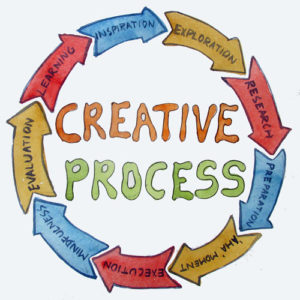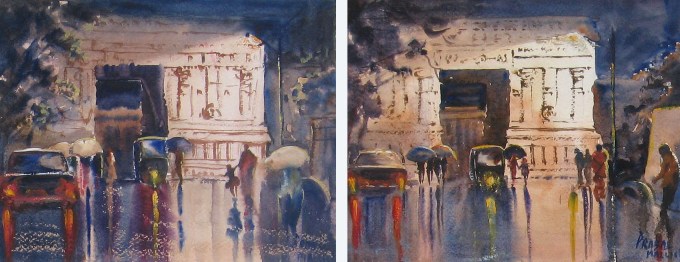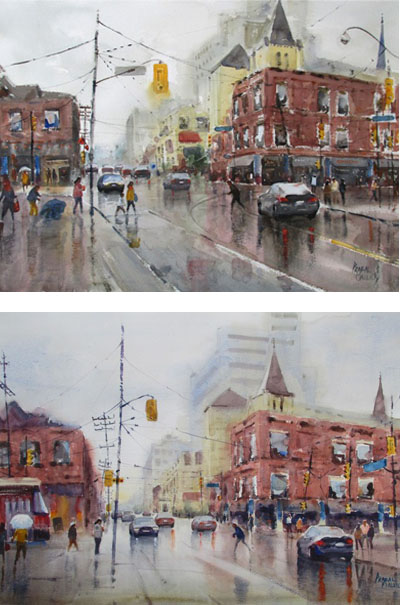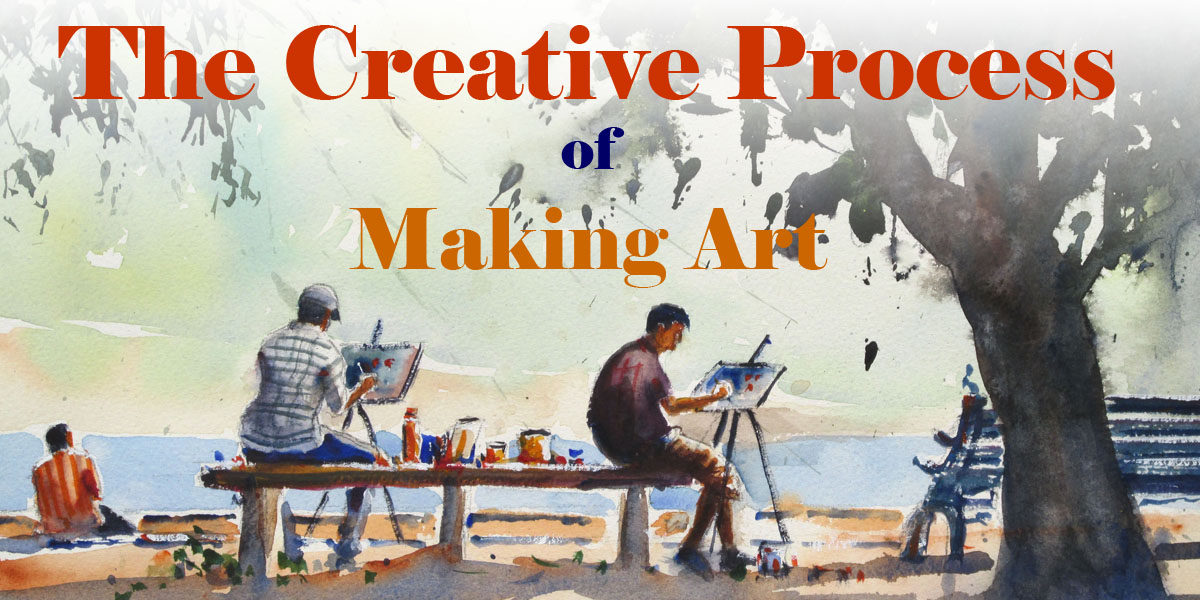As an artist, there is this particular question that I often face from different people on a daily basis. I am sure all my artist friends around the world must be facing this question too. And the question is “How muchtime do I typically take to make a painting”! I generally answer this question as, “Anything between a few minutes to a few years”. And then the eyebrows start to get raised.
The Creative Process
People often look at the time taken to make a piece of art as when a person is actually painting. And that time for me ranges from a few minutes to a few hours. But that is just the final execution time for the painting. All the time spent before that to reach that point in time when I am actually painting is more important and that time is highly variable. All the thoughts processed, all the ideas explored, all the actions taken to crystallize the idea and get clarity (many times just trusting intuition) and every other little things done to reach a point when I start to put colors on paper (including the action of putting colors on paper) is what can be called as my Creative Process of making Art. And this process varies depending on whether I am working outdoors or at the studio, working from life or working from photographs, working on some painting of my own or working on a commission.
Though its termed as a process its not necessarily a set of steps that I follow or have to be followed by anyone. The creative process sometimes can be purely spontaneous while at other times its methodical. But generally it is a mix of method and madness most of the times. In this series of posts I’ll take you through my creative process for different contexts. In this post I’ll touch upon my creative process in very broad terms.

Inspiration

In my opinion art can not happen without inspiration. Inspiration is basically that strong and sudden emotion that makes you want to go and create. It can come anywhere and anytime. It can come from a beautiful scene, a song, a story, from another art work or it can just be idea that strikes you. Inspiration can come from anywhere and many times it is from places you least expect. But unless you are looking for it there is a very small probability that it is going to strike you. So to begin the creative process look for inspiration and let it strike you.
Exploration

Just because you have been inspired, it does not mean it can turn into a master piece right away. However in some cases inspirations seems to give birth to great art works directly. It seems so because rest of the creative process happens inside artist’s head and that can not be observed externally.
When inspiration strikes, the next step is to search for that idea which would express your intention (born out of the inspiring moment) clearly on canvas. This is where imagination starts to come into play and continues to play a role in rest of the process. For me just sketching without any fixed ideas in head (exploring) or making small thumbnail studies helps in reaching the idea that would work on paper. Sometimes nothing works. In such cases just give it some time and space and the idea would come when you have almost forgotten about it.
Research
Many a times a painting needs some background research for factual correctness. For example if you are painting a scene from a bygone era you can not paint the figures with cell phones in their hands. You need to find out about things like clothing, vehicles, architecture etc of that period. Research typically includes reading, internet searches, talking to experts, travel and discussing with other people. While painting outdoors this process is much simpler as the subject is right in front of you.
Preparation
This stage consists of a lot of sketching if I am painting from a photograph. I generally use different mediums to sketch. I also make sketches of different sizes. While painting outdoors also I do a few sketches of my surroundings to get a feel of the place.When you sketch your hands and mind warm up and ideas start to get crystallized. It brings clarity in your head.
This stage may involve learning to work with a new medium or picking up a new skill or technique. In such cases preparation time is typically a few months to few years. The exploration stage also involves sketching. But here the sketches are done with some idea and intent unlike the free sketching in exploration stage.
Feeling for the ‘Aha’ moment

This is the stage that is quite elastic in terms of time. Sometimes I am okay with the first sketch itself. And more often than not it takes many sketches to reach that ‘Aha’ moment. Its that moment when the sketch is able to match the unseen vision. And it does not have to be the latest sketch you would have done. It could be an earlier sketch which did not appeal to you when it was done. But later when you see it with a fresh mind it seems to work. Here you can ask how can a sketch match up to something that is still not clearly visible even in your head. Well the question is absolutely valid. The eureka moment is actually intuitive and its like a spontaneous uplifting emotion that I have come to trust. And when that moment comes I dont explore any further. That sketch becomoes the reference for my final painting.
Sometimes that ‘Aha’ moment never comes. In such cases I dont go ahead with the painting. But sometimes I just looks at technicalities of the composition, color scheme etc and go ahead with the final work just to see how it turns out.
Execution
This is the implementation stage where the final painting is executed. All the previous process steps put together can be called as the build up stage which as I said earlier can last from a few minutes to few months and can go even up to years. All that time helps to bring clarity and confidence for executing the final work. But that clarity and confidence does not have to be 100%. In fact for me it has never been 100%. There is always room for spontaneity and improvisations. Especially when working with watercolors there has to enough room for things to happen naturally on paper.
Avoiding the ‘Oh No’ moment
Most paintings are killed when they begin to approach completion. A false stroke here and there towards the end of painting especially when working with watercolors can spoil all the good work that you would have done before that. So I prefer to be careful and take time to do the final touches in a painting to avoid the ‘Oh no’ moment.
Contrary to what I have said here sometimes an unintended stroke has actually worked for the painting. But the chance of that happening is very low.
Evaluation and Adjustments

When a painting has just been done one can be very attached to it. At times you may never see any glaring issues with it and at other times you may find faults even where there is none. So when I finish a painting I put it away for a few days. Typically 2-3 weeks works fine. Then I come back to it and do a critical evaluation. Depending on the evaluation I may do some minor changes and adjustments. But I dont do any major changes. If there are huge issues with the paintings I dump it in rejects drawer. Sometimes I paint it again on new paper or on the backside of the paper. Cropping the picture is also one of the things I sometimes resort to.
Learning
The creative process does not stop when a painting is done. You would always learn something new (however small it may be) from every painting. Its a good idea to document it by taking pictures and making a note somewhere. You can also take feedback from appropriate persons about your work and see how can you improve it. Many a times you stumble upon a technique, brush stroke or color mix in the process of making a painting. Make a note of it in your sketchbook and see how can you use it in your subsequent work.
The creative process is not linear. Its a loop and hence a never ending process. An artist just keeps traversing the loop again and again throughout his life. But every traversal of the loop makes her a better artist and her works more mature. Creative process is like a roller coaster ride of emotions. Generally the lows are more than the highs. But the high, when it comes is that of pure joy.

